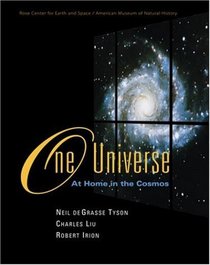Search -
One Universe: At Home in the Cosmos
One Universe At Home in the Cosmos
Author:
Physically and intellectually, the celestial bodies that move about the universe seem unreachable to us from our Earth-bound vantage. But recent discoveries in astronomy and physics reveal that the principles that govern our everyday life and the workings of the cosmos are one and the same. In ONE UNIVERSE: At Home in the Cosmos, Neil de Gras... more »
Author:
Physically and intellectually, the celestial bodies that move about the universe seem unreachable to us from our Earth-bound vantage. But recent discoveries in astronomy and physics reveal that the principles that govern our everyday life and the workings of the cosmos are one and the same. In ONE UNIVERSE: At Home in the Cosmos, Neil de Gras... more »
ISBN-13: 9780309064880
ISBN-10: 0309064880
Publication Date: 2/2000
Pages: 217
Rating: ?
ISBN-10: 0309064880
Publication Date: 2/2000
Pages: 217
Rating: ?
0 stars, based on 0 rating
Publisher: National Academies Press
Book Type: Hardcover
Members Wishing: 9
Reviews: Amazon | Write a Review
Book Type: Hardcover
Members Wishing: 9
Reviews: Amazon | Write a Review
Genres:
- Science & Math >> Astronomy & Space Science >> Astronomy
- Science & Math >> Astronomy & Space Science >> Astrophysics & Space Science
- Science & Math >> Astronomy & Space Science >> Cosmology
- Science & Math >> Physics >> Cosmology
- Engineering & Transportation >> Professional Science >> Astronomy >> Astronomy
- Engineering & Transportation >> Professional Science >> Astronomy >> Astrophysics & Space Science
- Engineering & Transportation >> Professional Science >> Astronomy >> Cosmology




